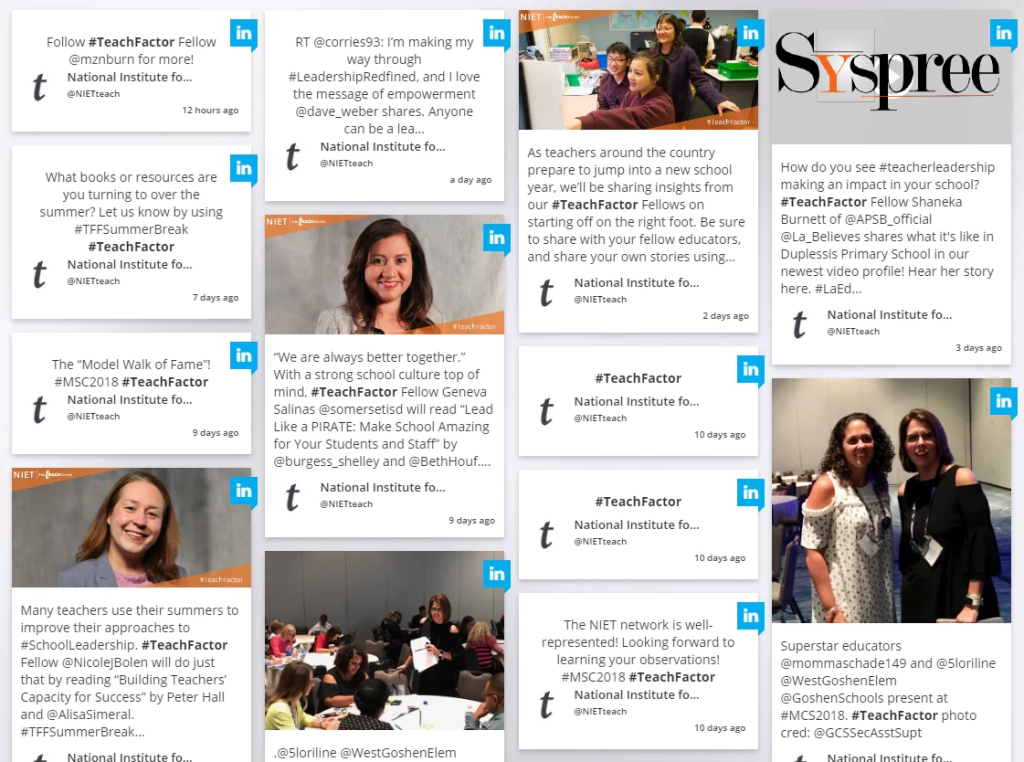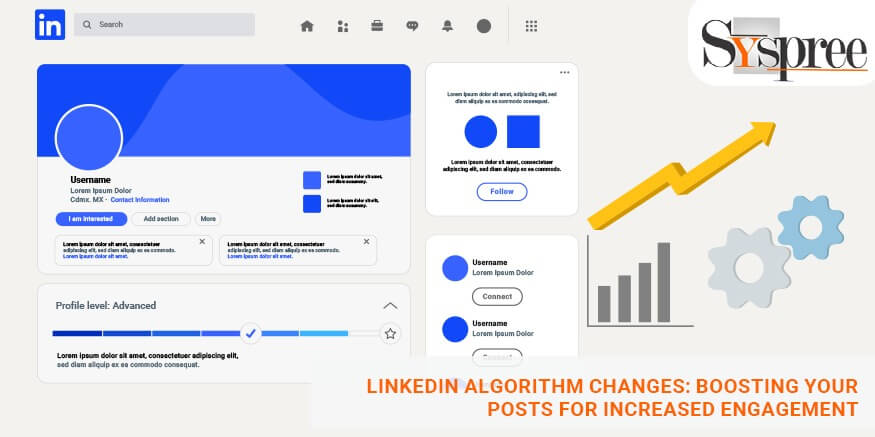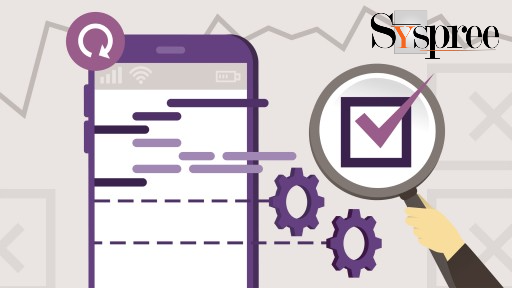LinkedIn, a professional social networking platform, has recently introduced important modifications to its algorithm, changing how posts are prioritized and displayed in user feeds. These changes will directly impact professionals and entrepreneurs who interact with content on the platform. For those who want to make it through these algorithmic changes effectively, it’s essential and understands the LinkedIn Algorithm Change, it’s essential to be aware of LinkedIn’s new method of displaying content and engagement.
In this blog, by leading social media marketing company we will look into the changes that LinkedIn has made and discuss effective ways to improve the popularity and reach of your articles. We will explore the motives of these changes, explain two significant changes to feeds and explain how LinkedIn can now recognize and reward posts that focus on “knowledge and advice.” Understanding the changes and adjusting your content to reflect these changes will help boost your LinkedIn profile and connect with the right people.
Let’s explore the secrets to increasing your LinkedIn posts using the latest algorithm.
LinkedIn’s Motivation: Solving a Problem
In recent times, LinkedIn has experienced a substantial increase in activity as a rising number of professionals joined the platform and increased the volume of shared or viewed content. Ever since the pandemic blurred the lines between professional and personal lives, LinkedIn users began sharing more personal content, such as photos of their families and selfies, which were not so common before on this social media platform.
However, this change in content also resulted in users trying to alter the algorithm to gain followers, resulting in a decrease in the overall quality and value of the content posted on LinkedIn. Many users started expressing their displeasure, saying that they would like to see more relevant and informative material relevant to professional development and growth.
Based on user feedback, LinkedIn recognized the need to enhance its feeds to be more useful, informative, and conducive to professional networking and knowledge sharing. To address this, the company introduced significant changes to its algorithm, with the goal to address these issues and enhance the user experience.
The principal reason for LinkedIn algorithm change was to fix the issue of unimportant and poor-quality content flooding users’ feeds. LinkedIn is determined to shift the attention from the aforementioned viral content towards content that actually creates value and assists professionals in enhancing their knowledge and skills.
Dan Roth, LinkedIn’s editor-in-chief, has stated that when content is viral on LinkedIn, it’s not praised within the company. Instead, LinkedIn is looking to promote content rooted in information and guidance, allowing users to develop and improve their skills as professionals.
As the pandemic continued, people’s priorities changed, and they looked for ways to improve their lives and work rather than just seeking recognition and engagement. LinkedIn tried to satisfy this need by altering its algorithm to focus on relevant and useful content that aligns with people’s professional interests.
In revamping their feeds, LinkedIn sought to create an environment for users to discover relevant content, network with industry experts, and have meaningful conversations. The goal was to create a community-driven platform encouraging professional development and growth.
The changes implemented by LinkedIn have resulted in positive results. Users are now getting an enhanced and personalized feed that aligns with their professional goals and dreams.
In the next section, we will examine the major changes LinkedIn introduced to its feed and the impact these changes will have on the visibility of your posts and engagement.
The Big Changes in LinkedIn’s Feed

LinkedIn has had significant changes to its feed. This brings two significant changes that affect the prominence and visibility of posts. Understanding these changes is crucial for active professionals and entrepreneurs on LinkedIn. Let’s explore these changes in greater detail:
1. Increased Visibility to Your Followers
Based on user feedback, LinkedIn has made adjustments to ensure that your posts will have a greater likelihood of being read by your fans in the new LinkedIn Algorithm. This update aims to provide information that users consider most valuable and is usually based on knowledge and tips. As per Alice Xiong, Director of Product Management at LinkedIn, users find the most valuable content when it originates from people they know and trust.
In light of this update, LinkedIn has noticed an increase of 10% in users who view posts from their followers. So, if you share content on LinkedIn, it’s more likely to be seen by the people you want to reach–your followers. It stresses the importance of creating connections and relationships on LinkedIn to boost the reach of your posts.
2. Prioritizing “Knowledge and Advice” Posts
LinkedIn has now placed greater importance on posts that provide “knowledge and advice” throughout the platform in the new LinkedIn Algorithm. This makes it possible for your posts to be seen by a wider audience apart from your current followers. The algorithm on the platform evaluates whether an article contains valuable insight or information and shows the post to users who will likely be interested and find it valuable.
The emphasis on “knowledge and advice” is LinkedIn’s method of ensuring its users get satisfaction from the content they consume through the platform. As per Dan Roth, LinkedIn’s Editor-in-Chief, the primary objective is to assist members in becoming more successful and productive at work. Since the introduction of this change, LinkedIn has observed a significant increase of 40% of people who have accessed content rooted in the knowledge of other people who are not part of their networks.
As a leading social media agency in Mumbai would tell you that to optimize your posts to get more engagement and visibility, in the new LinkedIn Algorithm, consider the following suggestions:
- Share your expertise: Consider what your unique expertise or knowledge could offer to others within your industry and your professional circle. Create content in the hope of offering important insights and useful information.
- Be aware of your audience: Take note of the particular audience you intend to reach with every article. Ensure your content is designed to resonate with this audience while addressing their needs and issues.
- Create Authority: Concentrate on your main areas of interest and show your proficiency. LinkedIn uses the information in your profile to assess your credibility on the subjects you address.
- d) Engage in meaningful interactions: Engage your readers by encouraging meaningful conversations. Encourage comments that provide an understanding and value to your blog post. By responding to comments, you can show that your blog post is creating real interest and will increase the reach of your post.
- e) Offer a viewpoint: Add your personal touch and your unique perspective to your posts. LinkedIn recognizes those who are creative in the way they present their posts. Post your thoughts, experiences, and knowledge to create posts that are more interesting and accessible.
By aligning your posts to LinkedIn’s focus on “knowledge and advice” and using these best practices, you can improve your content for greater followers and interest on the platform.
In the following section, we will discuss LinkedIn’s opposition to “viral” content and why the emphasis is on reaching the right people instead of seeking popularity.
Identifying “Knowledge and Advice” on LinkedIn
1. Speaking to a Distinct Audience
One of the most important aspects that LinkedIn examines when determining the significance of a blog post is the target audience in the new LinkedIn Algorithm. Every piece of content has a distinct addressable market, and knowing the audience you want to reach is essential. When writing a blog post, consider the specific people or groups who might find your content beneficial. Create a message that resonates with this audience by addressing particular needs, issues, or passions. When you direct your message to a particular group of people, you improve the likelihood of your post being deemed important and relevant through LinkedIn’s algorithms.
2. Writing in Your Core Subject Area
LinkedIn prefers genuine content that shows expertise in a specific field. Providing information and tips in your primary area of expertise positions your status as an authority and improves the chances that your posts will be viewed as such by algorithms. LinkedIn examines your profiles to assess your credentials and proficiency in the field you’re talking about. If you consistently provide valuable insight and show your proficiency in a particular field, the content you share is more likely to be seen by more people.
3. Encouraging Meaningful Comments
The algorithm of LinkedIn in the past awarded posts that had a high engagement, which included a lot of comments. But the emphasis has moved from the quantity of comments to the quality. Nowadays, LinkedIn emphasizes the importance of genuine comments that can contribute to an authentic conversation around the post. Inconsistent or generic comments such as “great!” or “so true!” are no longer relevant. Instead, promote thoughtful discussion by asking questions, soliciting opinions, or addressing particular points within your article. The most meaningful comments from people or professionals who are part of your audience will carry more weight and may increase the exposure of your article.
4. Adding a Perspective to Your Posts
LinkedIn is a fan of posts that provide unique perspectives or personal insight. Instead of merely sharing general information, incorporating your personality and unique perspective into your posts will make them more interesting and effective. Suppose you post your opinion, tips, or personal experience related to your field.
In that case, this differentiates your posts and increases your target audience’s likelihood of being viewed. LinkedIn’s algorithm utilizes artificial intelligence to determine whether your post is unique in its perspectives and information. Infusing your posts with personality and flair increases the likelihood of your content being seen by an even larger audience.
Keep in mind that LinkedIn strives to be an enterprise-grade platform focused on sharing knowledge and maximizing efficiency. Suppose you align your posts to these goals, identifying your audience’s needs, displaying your knowledge, encouraging meaningful engagement, and offering fresh views. In that case, you can improve your content to succeed in the latest LinkedIn algorithm.
Watch out for the next installment about shifting the attention from reaching a large number of people to reaching the right people on LinkedIn.
Shifting the Focus: Reaching the Right Audience

In the ever-changing algorithmic social media landscape, LinkedIn has shifted its primary focus from spreading virality to appropriate people in the new LinkedIn Algorithm. As a leading social media marketing company would tell you that while it’s tempting to focus on gaining popularity, LinkedIn encourages users to concentrate on engaging with the relevant people within their professional circles. Let us take a look at why reaching the correct target audience is important and how to improve your posts to reach this target.
1. The goal is to determine the relevance of a campaign over its virality.
LinkedIn is viewed as an online depiction of work that allows teams to have distinct conversations. Additionally, it is not the case that every piece of content is suitable for all professionals on LinkedIn. Instead of seeking to create virality, the algorithm of LinkedIn aims to connect you to people who can benefit from your expertise and knowledge.
Suppose you target the right people and focus on the right people. In that case, you can reach out to professionals who will be more likely to appreciate something of value in your content, resulting in meaningful interactions and possible collaborations. Relevance promotes genuine engagement and provides a positive environment for sharing information, growth in your career, and networking possibilities.
2. Tailoring Your Content for the Right Audience
In order to focus your efforts on getting your message to the right audience on LinkedIn, you should consider these strategies:
- Determine your audience’s needs: Before you write content, determine the professional or particular communities you’d like to interact with. Create posts tailored to their concerns, needs, and challenges specific to the industry.
- Provide valuable insight and experience: Share your knowledge and expertise that align with your fields of specialization. Make sure to share actionable suggestions, business trends, case studies, and thought-provoking insights to draw people looking for relevant information.
- Utilize LinkedIn’s official profiles: LinkedIn’s algorithm looks at the writer’s professional profile to assess content quality. Be sure your posts show your expertise and trustworthiness in your primary topic. This will help LinkedIn connect your content with those interested in your expertise.
- Encourage thoughtful comments: Instead of pursuing comments solely for engagement, focus on intelligent and meaningful discussions. Respond quickly and interact with other commenters to build a sense of community and draw in professionals who are able to provide valuable insights.
- Give your readers a unique perspective: You can stand in the crowd by sharing personal experiences of your experiences, stories, and experiences that relate to your field or area of expertise. Including your personal story in your content makes them more relatable and compelling, increasing their likelihood of reaching those who are interested.
Suppose you shift your focus to target the right people. In that case, you will be able to create important connections, establish yourself as a leader in your field, and establish yourself as an important partner in your professional circle.
In the end, LinkedIn’s algorithm shifts to prioritize authenticity and relevance over posting speed are much needed. By focusing on the right people and adjusting your content, and offering valuable information, You can enhance the quality of your LinkedIn posts to reach out to professional professionals that will appreciate your experience and find your tips most valuable.
Conclusion
Algorithm changes on LinkedIn have made the platform an increasingly valuable and useful platform for professionals. By prioritizing advice and knowledge, LinkedIn aims to create an environment that allows users to stay connected, learn and develop. The algorithm changes have resulted in a decrease in irrelevant content and an improved feed that is more tailored for users.
It is important to be aware of and adapt to the changes to increase the visibility of your posts and improve engagement. By sharing your expertise, understanding your audience, encouraging meaningful interaction, and presenting a unique viewpoint, you can enhance your posts to get more exposure as well as connect with the right people.
It’s all about interacting with professionals who can benefit from your knowledge rather than seeking viral fame. If you adopt these methods to succeed, you can take advantage of LinkedIn’s modern LinkedIn algorithm and increase your professional profile on the site. If you like this blog check out our previous blog on the Power of SEO in Web Design and Development: Boost Your Online Success Now.








